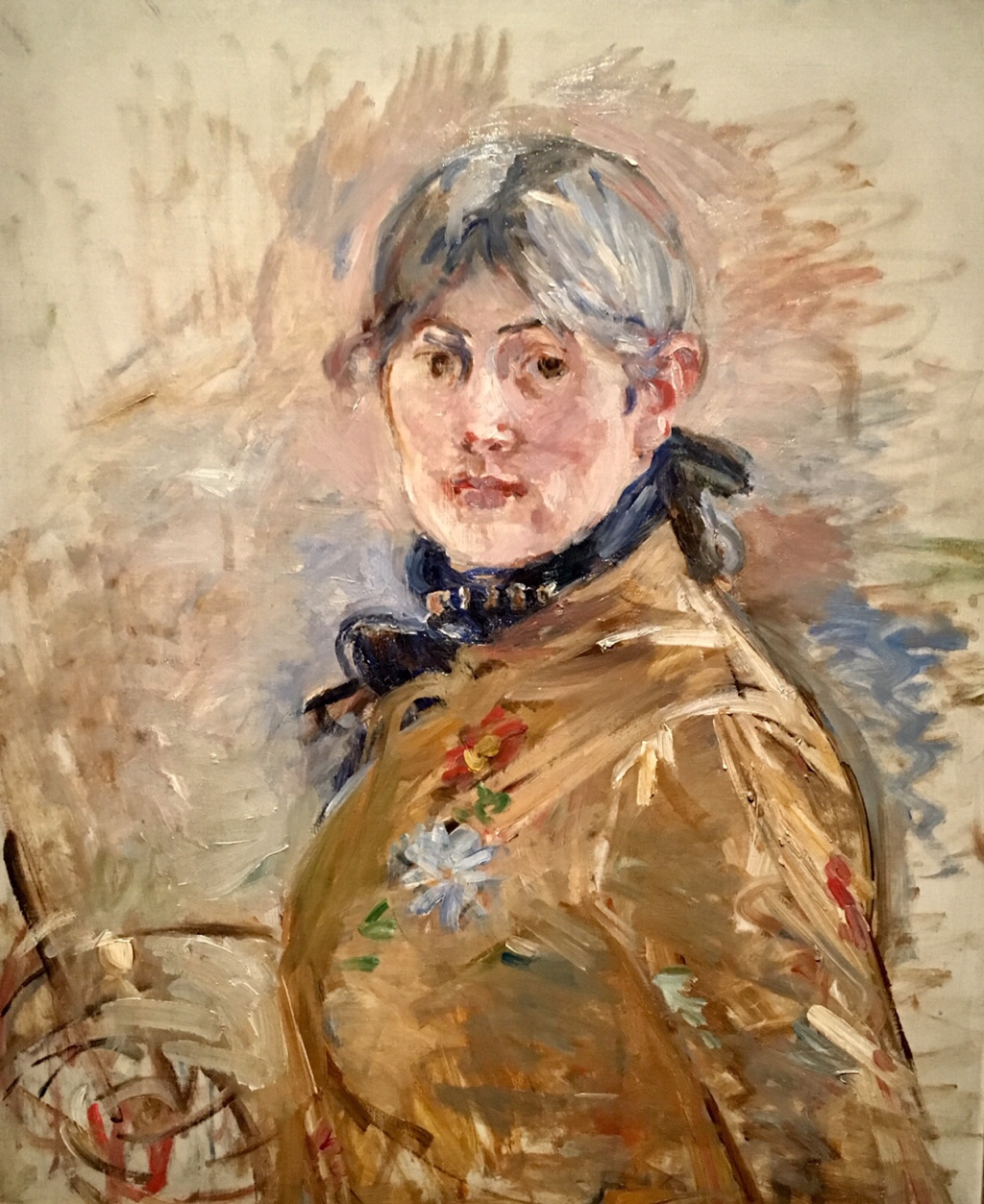|
I have a new art hero. The Orsay had a solo retrospective of Berthe Morisot while I was there, and I was transfixed. I’ve always been drawn to her paintings when I’ve seen them, but (unlike so many of the other Impressionist painters who seem to be ubiquitous), there just aren’t that many out there in museums. A telling fact in this show was that fully half the paintings were in private collections, which was a shocking percentage. What it means is that museums weren’t collecting her when they were eagerly buying up works by her male peers. Monet is in a category all his own for me — he invented a new way of painting, and while all artists (especially prolific ones) produce some uneven paintings, every period of his work is fully realized and exquisite, which is not something you can say about all artists. Even great ones. But I feel that Morisot holds her own with any of the other Impressionists and more than outdoes some of them. I spent a lot of the show tearing up, frankly. It was amazing to read that she began showing at the Salon, the pinnacle of the French art establishment, at the age of 33 and continued to do so for a decade, barring one year when they rejected both her submitted works. I kind of doubt it’s a coincidence that that year was the same year she also showed in the very first Impresssionist show (called the New Painting). She exhibited with that group as well for all eight years of their organized shows. She participated with them against the advice of male painter friends, including Manet. She knew what she wanted for herself, and she went for it. She also continued painting under her own name even after her marriage to Manet’s brother. I have to think it would have been advantageous for her to assume that well known name, but she wanted to paint under her own name on her own terms. Morisot was written off by many for painting mostly domestic scenes, much like her contemporary Mary Cassatt. But Degas painted a ton of interiors and women at their own daily lives scenes and never got downgraded for it. Even more, Vuillard made a career of interior, domestic scenes, but it’s ok if you’re a man. Morisot’s work reminded me of Vuillard and the Nabis as well as of the other Impressionists. Both groups of artists looked at Japanese prints and worked on compositions echoed the flat picture plane of those prints. Vuillard and Morisot both went further and echoed a lot of the surface pattern found in many of the prints. Look at this fragment by Vuillard on the left (it’s part of a huge piece, so I couldn’t get it all) and a very early portrait of two sisters by Morisot. I’m also adding a second, very typical Vuillard that has both the sense of pattern and the domestic interior theme. Morisot subverted the domestic conventions, though. She painted women at work, even if it was the domestic work in her home and in her circle. These women have more dignity and power than many of the other Impressionist paintings of women at work in cabaret settings, where they were often victimized by men. She also painted her husband and her daughter repeatedly. In a striking role reversal, these pieces show her husband entertaining and caring for their daughter while she is the one at work. It was a quietly revolutionary act.
Her self portrait as an artist, holding her palette and looking out at the viewer full of self confidence, moved me greatly. I did a small sketch of it in my journal. I couldn’t catch the likeness, but it was good to spend that time looking deeply. I also enjoyed studying the way she used paint. One contemporary art critic called her “the angel of the incomplete.” Her brushwork depicts objects with a spare, graceful economy of paint. She catches the essence of things quickly without overworking, and she uses the bare canvas in bold and radical ways. Apparently not everyone understood this, and that very boldness was denigrated as feminine tentativeness and indecision. Some thought she was afraid or unable to push her pieces across the finish line. But she knew exactly what she wanted from each canvas and didn’t feel the need to keep working to appease some outside sense of what a painting should look like. She said what she wanted to, and she left it to stand. I especially loved the paintings of her daughter Julie. These late ones have an almost Munch-like feel to them to me. Morisot nursed Julie through influenza before dying of it herself, far too young. I would have loved to see where her art took her next. Please excuse the glare on these shots. They’re all just my camera phone as I passed through the exhibit, but I wanted to show you some of the pieces I saw and let you get a taste of the show.
0 Comments
Leave a Reply. |
online store Martha Kelly is an artist and illustrator who lives and works in Memphis, Tennessee. Get occasional studio email updates. Categories
All
Archives
June 2024
|






